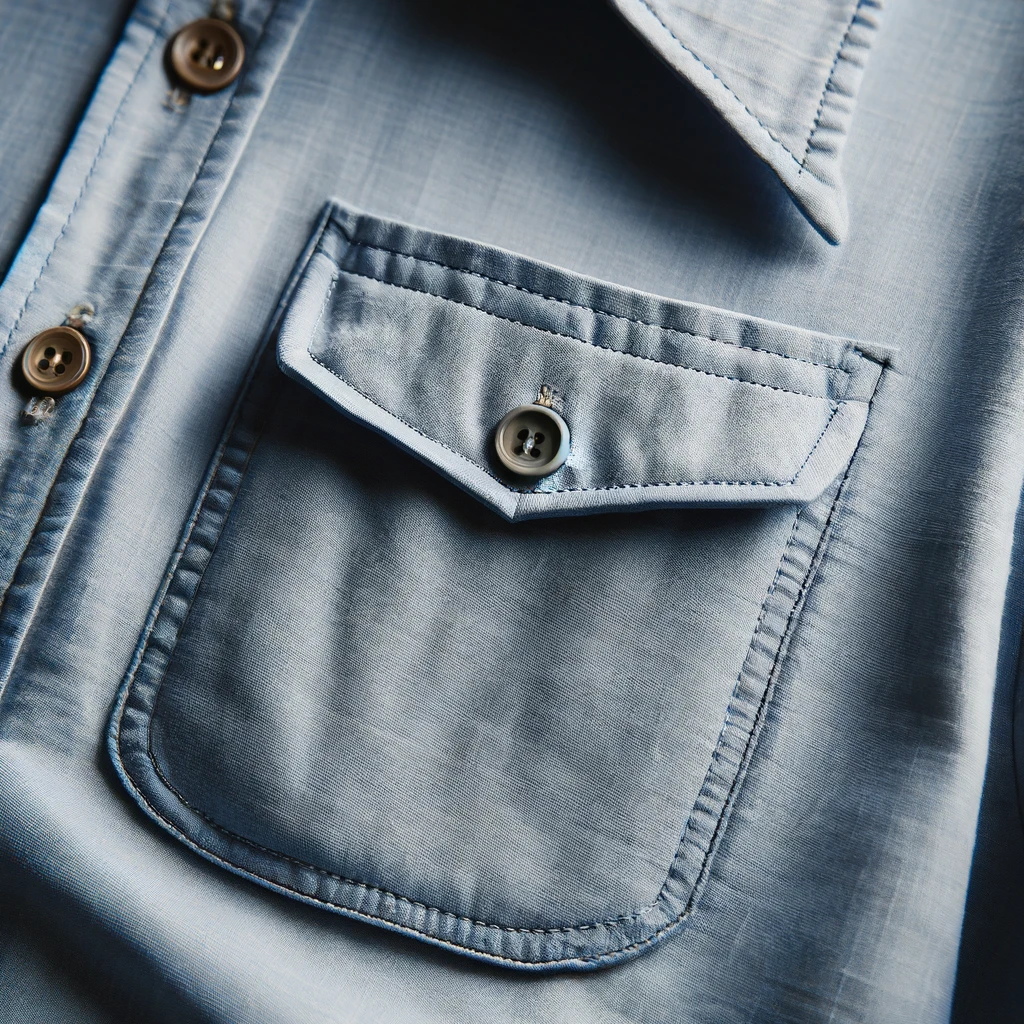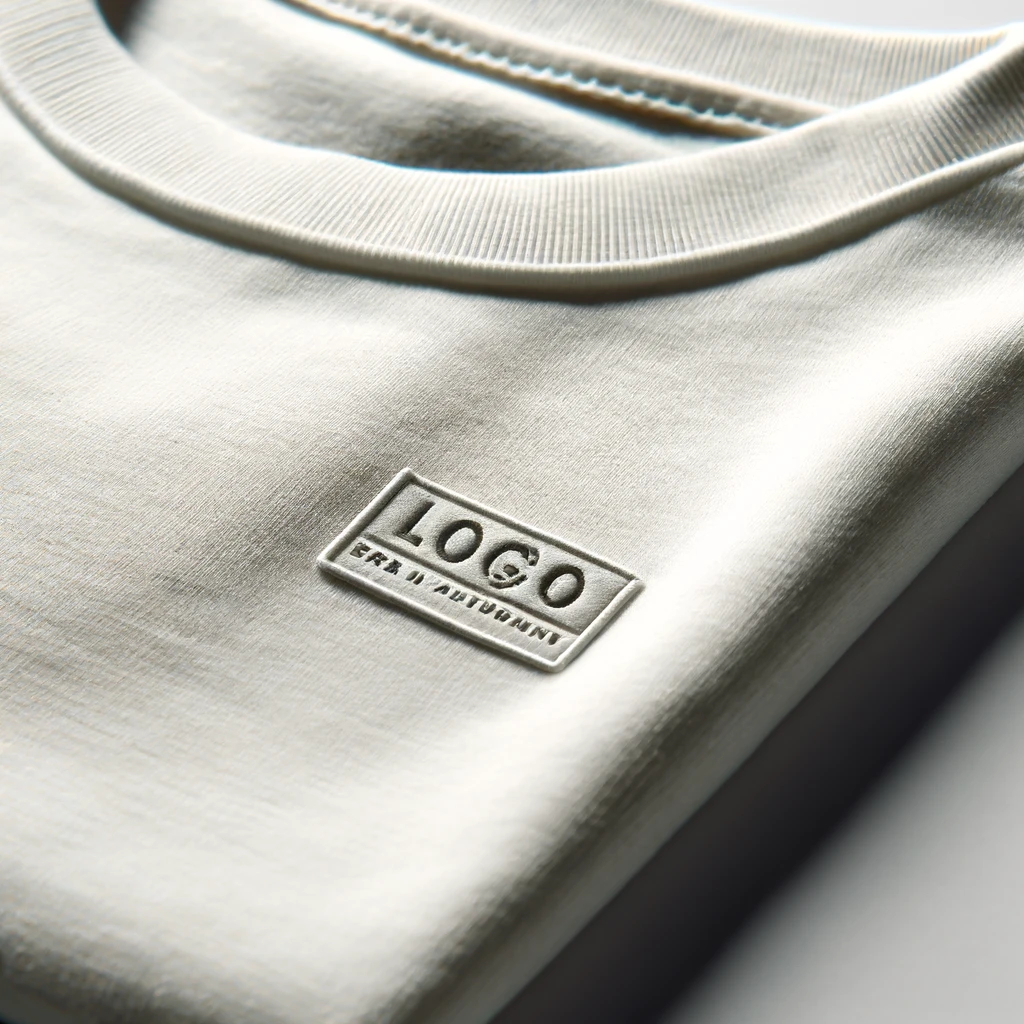Looking at a shirt pocket one might think that it is just a useful and not very exciting accessory but in fact it is a real style statement tool like blank t shirts. Even if you are just seeking a regular pocket, style choice, modern appearance, or functionality, the location of a pocket is of great importance. Here, we will consider the design of shirt pocket and its location on the t shirt to understand how this is done and how you can do it yourself.
The History of Shirt Pockets

The history of shirt pockets: Now that the background of shirt pockets has been elucidated it is necessary to pass on to the details of pocket position. Shirts are not meant to have pockets; pockets were incorporated in the trousers and jackets as a way of having small handy pockets for small items. It was only until the beginning of the twentieth century when the shirt pockets appeared regularly; at first they were adopted as a utility pocket for workers who needed some place to put tools or notes. The style of the shirt pocket eventually transformed into an aesthetic element and is now a must-have in both daily and formal clothing.
Types of Shirt Pockets
Shirt pockets are made in a variety of styles and each type of shirt pockets has its own distinctive role and significance with regard to the style of the shirt. All of these shirt sizes and pocket types will give you a better and comprehensive knowledge on how to select or even create the type of shirt that can effectively meet your expectations and requirements. Here are some common types of shirt pockets:
1. Patch Pocket design

Patch pocket is one of the simplest types of pocket which is an even, flat pocket that is stitched on the exterior side of the shirt. It is generally four sided or longer with parallel sides and is one of the more common pocket types on casual and work shirts.
- Best For: Country shirts, business shirts, denim shirts.
- Style: Informal, functional
- Features: Simple to build and hence usually made open.
2. Flap Pocket design

A flap pocket refers to a pocket that contains a flap that literally flaps over the pocket opening. It may be closed with a button or left without a closure.
- Best For: Military long sleeve shirts, safari long sleeve shirts, casual long sleeve shirts.
- Style: Slightly formal, secure
- Features: An extra layer of protection with flap can be either a design element or a practical feature.
3. Welt Pocket designs

A Welt Pocket is a long pocket that is strictly used on formal apparel such as dress shirts and blazers. They have a small mouth and have an additional strip of fabric (welt) along the opening.
- Best For: Business apparel: attire for the office, formal events.
- Style: Formal, discreet
- Features: Transparent or with a minimal number of covers usually without a flap.
4. Button-Down Pocket

Button-down pocket implies a pocket with a button used to secure the pocket from falling or opening by itself. This type of pocket can be seen most logos, on both casual and semi formal shirts.
- Best For: Casuals, business casuals, Safari shirts.
- Style: Casual to semi-formal
- Features: It adds a little bit of security and details.
5. Double Pocket

Dual pockets are two pockets that are horizontally placed in the mid-section of t shirt business the chest. This style is often used in work shirts and casual shirts for both practical and aesthetic purposes for a more balanced look.
- Best For: Work shirts, apparel shirts, mountain shirts.
- Style: Balanced, functional
- Features: Adds another level of shelves, balanced appearance.
6. Angled Pocket

An angled pocket is a pocket that is sewn at a slight angle rather than parallel/horizontally. This type of pocket has a deconstructive effect on the shirt style.
- Best For: Regular and business collared long-sleeve shirts.
- Style: Stylish, unique
- Features: Eye-catching design, functional
7. Hidden Pocket
A pocket is located inside the lining of a shirt or inside another pocket; this type of pocket allows for the storage of small items without being noticed.
- Best For: Cruise shirts and other personally protecting apparel.
- Style: Discreet, practical
- Features: Deemed a security for they are often used for travel or safe-keeping.
8. Zipper Pocket

Zippers also come in handy in the design process of such a pocket which has a zipper closure; hence items are secured in it. This type of pocket is effective to be in active or outdoor style.
- Best For: Casual shirts, sports shirts, travel shirts.
- Style: Practical, secure
- Features: Has high security but suit for active use.
9. Cargo Pocket

A cargo pocket is a larger pocket and may be an expandable pocket as well as contain additional compartments. It is usually applied on the out door or work shirts.
- Best For: Activity-shirts, occupational shirts, action-shorts.
- Style: Highly functional, practical
- Features: Some of them have a large storage space, and they may have divisions as well.
The Ideal Placement for Different Styles
The position of the shirt pocket can be effectively regarded as a critical design feature that determines the general look and feel as well as the usability of the shirt like heat press. In regard to pocket placement, it varies from one style to another depending on the purpose of the shirt; therefore, it ought to be flattering and functional. Here’s a guide to the ideal pocket placement for various shirt styles:
Casual Shirts

Casual shirt pocket placements tend to be more creative and relaxed. Among intricate designs of these shirts we can find denim shirts, flannel shirts, and casual button-downs.
- Single Pocket: Typically located on the left-hand side of the chest – being a balanced look that is not overly formal and practical at the same time. This placement works well for more casual btn down oxfords and flannels.
- Double Pockets: Situated symmetrically on both sides of the chest. It is stylish and functional hence it can be used on casual shirts that are modeled as work wear or on safari shirts.
- Angled Pockets: However, on rare occasions, there may be one or two pockets which are cut at an angle for a sophisticated and more casual appearance, which is often observed in more fashionable casual shirts.
Formal Shirts

Dress shirts are formal shirts and therefore call for less flashy pockets and those which are placed apart from each other in the left or right side of position.
- Left Chest logo: A welt pocket is always placed on the left side of the shirt just on the chest of the shirt. This perfect placement is not prominent and does not distort the front side of the shirt, which is flat and appropriate for business and formal events.
- No Pocket: In the most formal occasion it is probably the best to consider a shirt with pocket omitted. This makes the manufacturing process smooth and gives an overall chic and clean design with no added extra bulk.
Work Shirts

Work shirts on the other hand are receptive and give first preference to usefulness and have pockets which are of great use usually placed in multiples. These shirts are meant for people who work in a heavy field or are involved in heavy outdoor activities.
- Lower Chest: There are usually pockets which are dragged lower on the chest to allow an easier access while at the same time offering more storage space. This placement is used quite often in utility and work shirts.
- Multiple Pockets: Some other types of pockets that work shirts might have include sleeve or side pockets. These are manufactured to help one in holding tools, notes, or any other important materials.
- Button-Down or Flap Pockets: If tougher looking clothes are required work shirts may have button down or flap pockets so that stuff put into pockets during shift work does not fall out during physical work activities.
Outdoor and Adventure Shirts

Many shirts that are intended for activity while outdoors such as hiking shirts or safari shirts have at least two and frequently numerous and distinct pocket locations.
- Double Chest Pockets: Located centrally on the wearer’s chest on opposite sides of the body, these pockets keep the balance of the direct to garment printing it is stable while offering more space for carrying small items such as maps, compasses, or sunglasses.
- Hidden or Zipper Pockets: Other pockets that are lined with zipped -up opening can be put alongside the side seams or other pockets for sneakier hiding; this can be for vital items such as keys or money.
- Sleeve Pockets: Smaller pockets on the sleeves also come in handy for holding similar objects like pens or small tools that one may need for his work and therefore making the shirt more practical.
Pocket Placement Tips

These are the pocket placement tips:
- Balance and Symmetry: Make sure that pockets are placed at an equal distance for a more harmonized appearance. Even a small misalignment of the pockets can be enough to break the entire visual composition of a shirt.
- Consider the Shirt’s Purpose: Clients should consider the purpose of the shirt when choosing pocket positioning. The casual shirts provide room for more creative placements while formal ones should be designed in more simple traditional patterns.
- Body Proportions: Consider the shape of the body together with proportions of the person wearing the clothes. Pockets which are big can distort the appearance of a small stature whereas small pockets can mar the looks of a tall or even an average stature man.
- Functionality vs. Style: Determine whether the pocket is going to meet a functional or fashionable purpose. There should also be pockets that are functional and other that can be emphasized on the stylists side.
Other Common Logo Placement Options
In the discussion of branding and customization, the position of a logo on a shirt can have a significant effect on the overall appearance and recognition of the entire design itself. Here are some common logo placement options, each serving different purposes and stylistic preferences:
1. Left Chest placement

- Description: Worn on the left side of the upper body, over the heart.
- Best For: dress shirts, polo, work uniforms, casual shirts.
- Advantages: Very traditional and recognizable ‘face’ positioning that is ideal for brand recognition and practically cannot be overlooked.
- Common Use: Branding images, identification badges, school insignias, sports mascots.
2. Right Chest placement

- Description: Located at the right side of the chest.
- Best For: Casual shirts, working uniforms and active wear.
- Advantages: Presents a major alternative to the standard left chest location for name tags and offers a balanced appearance when combined with identifications or other emblems on the left side.
- Common Use: Characters’ names, other insignia, supplementary marks.
3. Center Chest design placement

- Description: Most commonly centrally placed on the chest and larger than the other accurate placement.
- Best For: T-shirts, hoodies, promotional – shirts.
- Advantages: Outdoor: Most visibility and impact, appropriate for stunning designs or messages.
- Common Use: Product/line names, event names/slogans, graphic designs.
4. Back print placement

Upper Back: Just below the neck collar- For all the collars for summer season.
- Description: Worn below the neck line between the shoulder blades.
- Best For: Sports apparel including jerseys, workout shirts, casual shirts.
- Advantages: Is useful to represent information when the person is seen from behind, for instance for names or additional branding.
- Common Use: Naming of the teams, allocation of numbers to players, pre-match slogans.
Full Back: With more lettering across the shoulders and more spread out all over print the upper back.
- Description: Spreads over a large area of the back.
- Best For: shirts, sweaters, hoodies.
- Advantages: Largest of all, suitable for large logos or designs; very catching to the eye.
- Common Use: Big titles, the promotion of events, elaborate imagery.
5. Sleeves placement

- Description: Worn on the upper left or right sleeve of the outer garment.
- Best For: T-shirts, polo, long sleeves.
- Advantages: Is used to add branding with a great look on the multiple logos without overwhelming the chest area.
- Common Use: Samsung logo, other sponsors’ logos, framing, decoration.
6. Hemline

- Description: Below the bottom hem of the shirt under the front or side panel.
- Best For: Polo T-shirts, casual shirts etc.
- Advantages: Still, a small additional design element not interfering with the main motif creates an extra accent.
- Common Use: Logotypes, wordmarks, fenestrations, micro-branding.
7. Yoke placement

- Description: On the strap of a back below a collar across a shoulder area.
- Best For: Cowboy shirt, dress shirt, uniform shirts.
- Advantages: Traditional or formal position which places elements above the normal or closer together as in putting a decorative stitch or small logo.
- Common Use: Small logos, ornaments ,brand logo names etc.
FAQs
Conclusion
Getting the right piece for the shirt pocket is another piece of advise that makes a good impression in your wardrobe. Whether one intends to buy a shirt specifically for casual wear or dress up for formal events or just to have it as a part of the wardrobe for everyday use, there are some considerations on the pocket placement that would really come in handy and also have heat transfer vinyl. Through these factors the type of shirt, the given purpose of the pockets and the general body proportion of the wearer; one can design a shirt which not only fully serves its purpose but one also which portrays beauty and elegance and also have a proper placement. So the next time you pick up a shirt you fancy, take the time to look at the pockets – they might just take the shirt from being a ‘like’ to a ‘love’.
